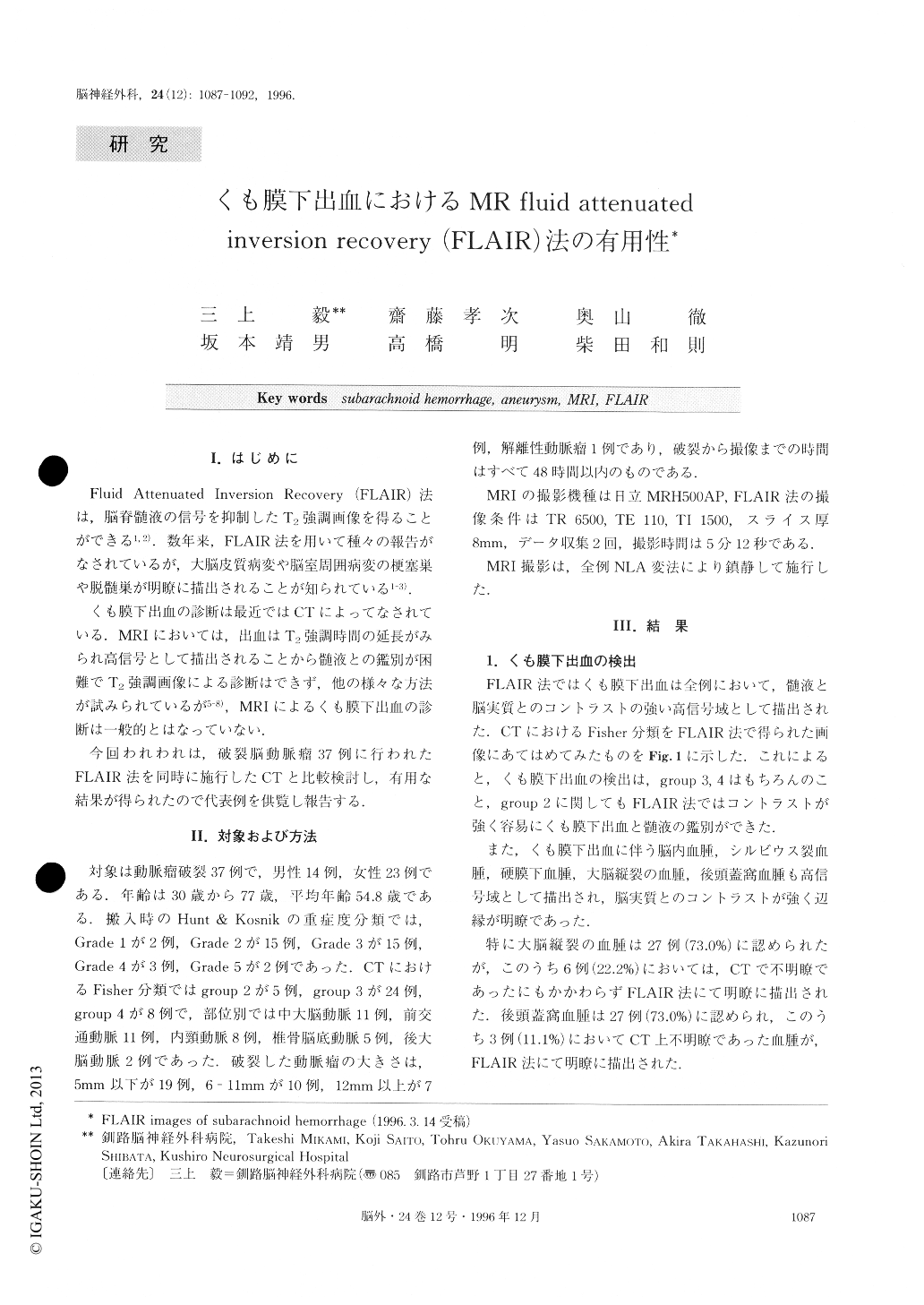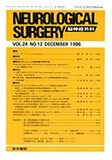Japanese
English
- 有料閲覧
- Abstract 文献概要
- 1ページ目 Look Inside
I.はじめに
Fluid Attenuated Inversion Recovery(FLAIR)法は,脳脊髄液の信号を抑制したT2強調画像を得ることができる1,2).数年来,FLAIR法を用いて種々の報告がなされているが,大脳皮質病変や脳室周囲病変の梗塞巣や脱髄巣が明瞭に描出されることが知られている1-3).
くも膜下出血の診断は最近ではCTによってなされている.MRIにおいては,出血はT2強調時間の延長がみられ高信号として描出されることから髄液との鑑別が困難でT2強調画像による診断はできず,他の様々な方法が試みられているが5-8),MRIによるくも膜下出血の診断は一般的とはなっていない.
We studied MR fluid attenuated inversion recovery (FLAIR) pulse sequences in 37 cases with subarach-noid hemorrhage caused by aneurysmal rupture. FLAIR sequence suppressed the CSF signal and pro-duced very heavy T2 weighted images. This has been of particular benefit in identifying lesions at the mar-gins of the brain, around the basal cisterns, in the brain stem and at the gray-white matter junction. Based on these findings, we were able to detect the subarachnoid hemorrhage. Subarachnoid hemorrhage was able to be demonstrated as high signal intensity on FLAIR sequ-ences in all patients. Clear visualization of acute sub-arachnoid hemorrhage was able to be obtained by MR FLAIR sequences in not only Fisher's group 3 or 4, but also Fisher's group 2. Moreover it was suited for the detection of intraaxial hematoma, Sylvian hematoma, subdural hematoma and subarachnoid hemorrhage in the posterior fossa and interhemispheric fissure. Espe-cially, it was useful for detecting intraventricular hemorrhage. Therefore, if patients suffering from sub-arachnoid hemorrhage present slight headache or aty-pical symptoms, sometimes it may be more suitable to perform MRI FLAIR pulse sequences first.
Aneurysms were found in 21 cases (56.8%). When the aneurysmal size is more than 7mm, the rate of de-tection becomes 100%. Aneurysms present various MR appearances because of flow characteristics. Aneurysms were demonstrated as low signal intensity except in 3 cases. In one out of 3 cases, aneurysms were revealed as high signal intensity and in the other two cases, it was revealed as mixed signal intensity. According to the previous studies, rapid flow was demonstrated as low signal intensity by vascular flow void, and delayed flow was demonstrated as high or mixed signal intensi-ty by flow related enhancement and even echo rephas-ing. MR clearly delineates the size, the lumen, the flow, and the extraaxial location of aneurysms. In conclusion, MR FLAIR pulse sequences could be reliable and use-ful for diagnosis of subarachnoid hemorrhage, especial-ly as screening tests for outpatients.

Copyright © 1996, Igaku-Shoin Ltd. All rights reserved.


